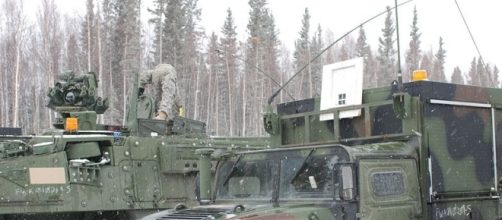In spite of sanctions, North Korea appears to be on a roll with its program of developing nuclear missiles that can strike the United States. Its latest test of a long-range ICBM, which is believed to have the ability to strike Alaska came as a shock and set in motion the American defense machinery. It has to tackle the threat and prevent such a disaster from happening.
The warning bell
Daily Mail UK reports that North Korea test-fired an intercontinental ballistic missile that has a range of more than 5000 km and could reach Alaska. The missile crashed into the Sea of Japan but its probable range is a matter of concern to the Pentagon.
The US military is equipped with sophisticated defense systems to thwart any external attack but, the determination of Kim Jong-un and the speed at which he is progressing has set alarm bells ringing.
Alaska has a population of around 750,000 people and it already has a defense mechanism installed at Fort Greely which will have more than 40 missile interceptors by the end of the year. This location is nearly 100 miles outside of Fairbanks in Alaska, and California's Vandenberg Air Force Base. There are possibilities of adding to this defense by positioning additional ground-based interceptors at Fort Greely
The United States has already conducted a trial of intercepting and shooting down a dummy ICBM in midair by launching a GMD interceptor from the California base.
However, the reliability of the GMD system falls short of expectations, especially if there are a number of missiles approaching together.
Kim’s message to the world
An expert in matters related to North Korea has doubts about the anti-missile capabilities of the United States. Incidentally, he had earlier indicated that North Korea would not attain capability to deploy any nuclear-tipped ICBMs till the late 2020s but the ground reality is contrary to his expectations.
There are also reservations on whether Kim Jong-un has been able to miniaturize a warhead for installation on an ICBM.
In view of the rapid changes in the Korean peninsula, the American think tank must work overtime to ensure the safety of Alaska by using every possible means at its disposal. The U.S. and its allies already have land and sea-based equipment to tackle regional situations which may not prove to be adequate against threats from an ICBM.
Kim Jong-un has sent a message to the whole world by conducting the test of the ICBM launch on the eve of the G20 summit. He knows that he and his nuclear ambitions will probably hog the limelight in the meeting of world leaders and is aware of the fact that the world is divided on the issue of condemning him. Kim is keen to make his point. Therefore, the leaders in the G20 summit must put aside their differences and take a decision to save the world from another major war.


